Experience sifting Turface and grit for gritty mix
val rie (7a - NJ)
5 years ago
Featured Answer
Sort by:Oldest
Comments (70)
val rie (7a - NJ)
5 years agoval rie (7a - NJ)
5 years agolast modified: 5 years agoRelated Discussions
Question about Turface for Gritty Mix
Comments (7)Since I had to order my turface on the internet. I had not very much of it. The bark was 1/4 size from a good orchid place, the turface was 1/4 and so was the granite. I can't see any point in losing some of the turface because it gets ground into powder from the screening. It worked out great for me anyway. I was a bit heavier on the bark, due to a lack of the turface and granite, but the plants still look good and they are not sitting there wet. I checked and they are draining out. So, I don't think one needs to screen it. If the plant is a super fussy plant and ultra expensive maybe, but these were just test plants. They need good, but not excellent drainage....See MoreGritty mix: substitute granite grit with Marble gravel OK
Comments (10)Tapla thanks for the reply. Would the pea gravel be OK? As I said I found fine bark at the Gowanus Nursery as suggested on the thread where to find the materials for the gritty mix. It does not look like wood chips. Could I mix just Napa Floor-Dry XXX 8822, some bark and some Miracle Grow orchid mix (it is a mix of some peat moss and fine bark, not a real orchid mix but way chunkier than potting soil) and / or perlite? I want to repot my plants on a grittier mix but I can't get huge bags or travel hours. I live in Brooklyn NY. Not much variety in gardening supplies and I live in an apt. I put some plants on the roof and fire escape in the spring / summer/ part fall. If I can't get the perfect gritty mix I'd like at least have a better mix of what comes prepackaged. I grow hot peppers (habaneros), ficus, mangos, lychee from seed. Have coffee plants, some tropical aroids. S...See MoreDeciding where to use Turface Gritty Mix
Comments (24)Jamie, there are plenty of aquatic plants, but we seldom grow them as container plants in soil. I would not consider a willow tree to be aquatic. All the willows on our property grow in areas where the ground dries out occasionally during the growing seasons. They are never in a constant state of being waterlogged. I think maybe you're thinking of a mangrove environment, as opposed to a rain forest. In mangrove swamps, plants and trees have adapted to being in water. In a rain forest, the trees have adapted to seasons of high humidity and lots of rains. Orchids, for example, enjoy the humidity and rains, but couldn't be grown in a constant state of wetness. I'm not really knowledgeable enough to explain the chemical breakdowns and the science of it all, but I can tell you that in nature, there's a certain balance kept by all the living and non-living organisms and the constant decomposition going on. It's a cycle that works very well in a garden environment... but it doesn't work in a pot. Within the confines of a pot, it's next to impossible to keep everything in a state of balance because the same living organisms are not present cycling the decomp... and an organic environment in a pot can quickly become unbalanced and toxic. That's why it works best to keep a more inorganic medium in containers. Perhaps Al or someone can explain mycorrhizal fungi, which have a symbiotic relationship with plants, and how they fit into container growing. There's a huge difference between water in vapor form, or being slightly moist... and being in a constant state of wetness. Most container grown plants dislike being consistently wet. The roots can't survive being waterlogged all the time. They need oxygen and a chance to "dry out" for periods of time, and a fine, compacted soil that holds too much moisture for long periods of time does not allow for the necessary exchange of oxygen and gases. I'm probably doing a poor job of explaining it... we can't really talk about growing in the ground and growing in a confined container in the same breath... the two environments are at opposite ends of the growing spectrum. Instead of comparing the two environments, I think of them as two completely separate subjects. Each has a different set of needs. In a garden, nature controls most things... in a pot, we are in control... we are playing the part of Mother Nature....See MoreAl's Gritty Mix Turface Size, Screen size (and Citrus tree)
Comments (3)Thanks so much mblan13. I have a 1/2", a 1/4" screen and I *think* I actually have one of those tops for a reptile tank kicking around. My friend gave me an old style tank w/ the metal corners with a top like that. I wanted the tank for fish, but I think I still have the screen top. If not, I can make one easily enough knowing the measurement. I have regular screen door material too, so can make a screen with that for the finest stuff. I figured that rinsing would be a good way to remove the smallet stuff/dust, so I am glad you brought that up and will do that w/ the Gran-I-Grit. I did get one of my Gran-i-grit bags at Agway. Had one from the local garden center but Agway was cheaper. Was gonna get two there but they only had one in stock. I didn't know they carried Turface, though. The closest Agway is in NJ, though. Dollar for dollar, I am better off using my garden supply and the landscaping place for the Grit and Turface. I hadn't considered Opti-sorb. It may be worth looking at. I was going with Turface because I was under the impression it held up the longest without breaking down. I do have raging ant issues. Seem to get in every pot I have outside, so it may be the way to go. I'll look into it. If I can find it close by, maybe it would be the way to go. The price I was quoted for the Turface MVP was less than I expected, so I was going to go with that and stick to the Gritty Mix as close as possible. And good to know someone else is using the Frey Brothers stuff! Thanks so much for all the info, mblan13. I do appreciate it! merlcat...See Moreval rie (7a - NJ)
5 years agoMatt Barnett
5 years agoval rie (7a - NJ)
5 years agonewhostalady Z6 ON, Canada
5 years agoval rie (7a - NJ)
5 years agonewhostalady Z6 ON, Canada
5 years agoval rie (7a - NJ)
5 years agonewhostalady Z6 ON, Canada
5 years agolast modified: 5 years agoval rie (7a - NJ)
5 years agonewhostalady Z6 ON, Canada
5 years agoval rie (7a - NJ)
5 years agoval rie (7a - NJ)
5 years agonewhostalady Z6 ON, Canada
5 years agomblan13
5 years agoval rie (7a - NJ)
5 years agonewhostalady Z6 ON, Canada
5 years agotropicofcancer (6b SW-PA)
5 years agoval rie (7a - NJ)
5 years agolast modified: 5 years agonewhostalady Z6 ON, Canada
5 years agonewhostalady Z6 ON, Canada
5 years agotropicofcancer (6b SW-PA)
5 years agoval rie (7a - NJ)
5 years agogardengal48 (PNW Z8/9)
5 years agonewhostalady Z6 ON, Canada
5 years agolast modified: 5 years agonewhostalady Z6 ON, Canada
5 years agonewhostalady Z6 ON, Canada
5 years agotropicofcancer (6b SW-PA)
5 years agoval rie (7a - NJ)
5 years agotropicofcancer (6b SW-PA)
5 years agoval rie (7a - NJ)
5 years agonewhostalady Z6 ON, Canada
5 years agolast modified: 5 years agoval rie (7a - NJ)
5 years agonewhostalady Z6 ON, Canada
5 years agotapla (mid-Michigan, USDA z5b-6a)
5 years agonewhostalady Z6 ON, Canada
5 years agotapla (mid-Michigan, USDA z5b-6a)
5 years agoVladimir (Zone 5b Massachusetts)
5 years agoVladimir (Zone 5b Massachusetts)
5 years agotropicofcancer (6b SW-PA)
5 years agolast modified: 5 years agoSkip1909
5 years agotropicofcancer (6b SW-PA)
5 years agoval rie (7a - NJ)
5 years agonewhostalady Z6 ON, Canada
5 years agotapla (mid-Michigan, USDA z5b-6a)
5 years agonewhostalady Z6 ON, Canada
5 years ago
Related Stories
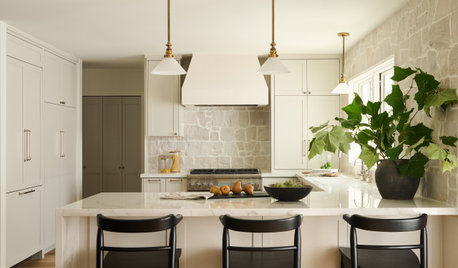
KITCHEN WORKBOOKHow to Remodel Your Kitchen
Follow these start-to-finish steps to achieve a successful kitchen remodel
Full Story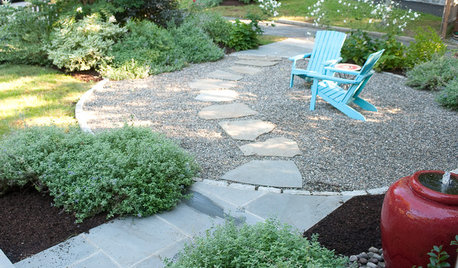
LANDSCAPE DESIGNHow to Select the Right Gravel for Your Garden
Answer these 7 questions to find the right gravel size, color and texture for your needs and landscape style
Full Story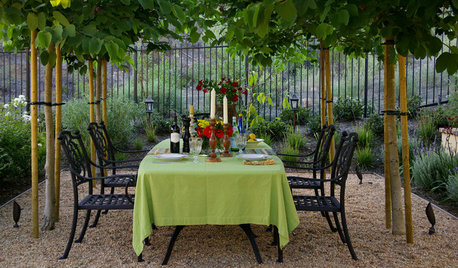
LANDSCAPE DESIGNEnjoy the Romance of Dining in a Classic Gravel Garden
Here’s what to consider when it comes to installing, styling and maintaining a DIY-friendly gravel patio
Full Story
LIVING ROOMSBelow My Houzz: An Inviting Basement With Industrial Edge
Reconfiguring a cramped, damp basement opens up a new world of sleek, functional spaces
Full Story
PETSDealing With Pet Messes: An Animal Lover's Story
Cat and dog hair, tracked-in mud, scratched floors ... see how one pet guardian learned to cope and to focus on the love
Full Story
WHITE KITCHENS4 Dreamy White-and-Wood Kitchens to Learn From
White too bright in your kitchen? Introduce wood beams, countertops, furniture and more
Full Story
TILEPorcelain vs. Ceramic Tile: A Five-Scenario Showdown
Explore where and why one of these popular tile choices makes more sense than the other
Full Story
SHELTERING AT HOME15 Essentials for the Baker’s Kitchen
You can turn out delicious home-baked goods with ease when you own these utensils, tools and pans
Full Story
RUSTIC STYLEBrick Floors: Could This Durable Material Work for Your House?
You love the old-world look, but will you like the feel of it underfoot? Learn the pros and cons of interior brick flooring
Full Story
MOST POPULARHouzz Tour: Going Off the Grid in 140 Square Feet
WIth $40,000 and a vision of living more simply, a California designer builds her ‘forever’ home — a tiny house on wheels
Full StorySponsored
More Discussions











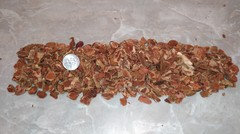




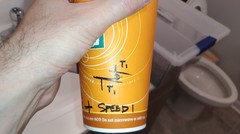

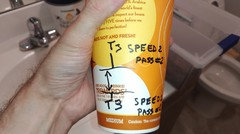






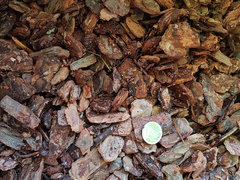

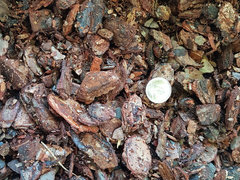



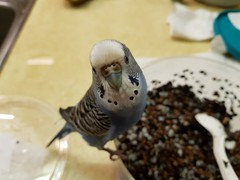

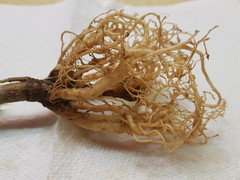




tapla (mid-Michigan, USDA z5b-6a)